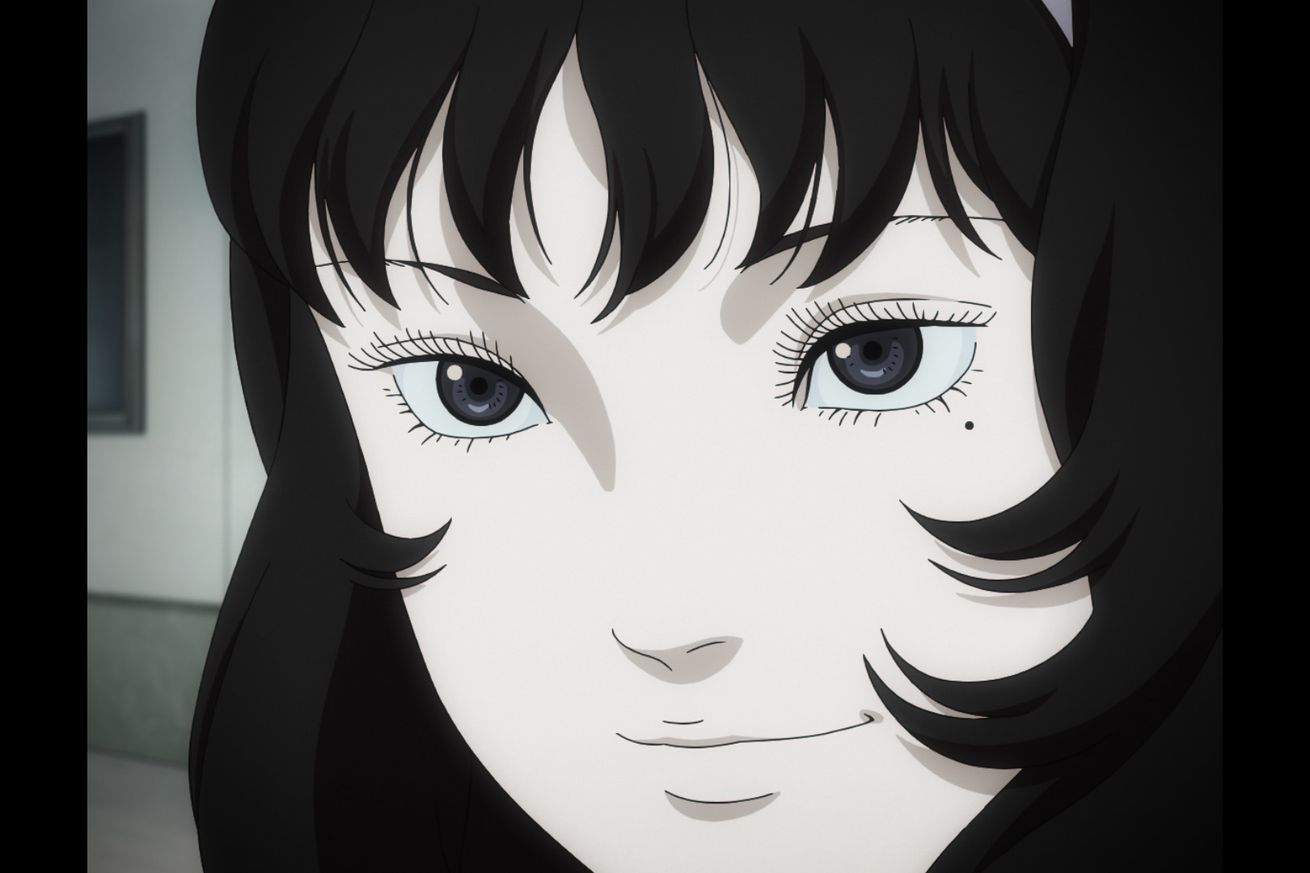
Netflix’s new anime is just a taste of Junji Ito’s terrifying stories
Part of what makes Junji Ito’s work so terrifying is how it sticks with you. The mind behind iconic horror manga like Tomie and Uzumaki takes an idea — whether it’s a schoolgirl who can’t die or a small town obsessed with spirals — and steadily pushes the concept as far it can go, usually toward some kind of disturbing body horror that forces you to look away. Before you know it, the idea has lodged itself in your brain, his carefully crafted black-and-white images flashing even after you close the book.
The new Netflix anthology Junji Ito Maniac: Japanese Tales of the Macabre, which adapts a number of Ito’s stories into animated episodes, captures some of that terror. The ideas are still there, the horrifying imagination that can make even kids eating ice cream into something unsettling and grotesque. But it also breezes past the stories so quickly that they don’t have the chance to really get stuck. In that way, it’s a good introduction to Ito’s work — but it doesn’t fully capture the dread.
Tales of the Macabre features adaptations of 20 different stories spread out across 12 episodes; some episodes are dedicated to a single idea, while others are split into two. There are some classics here, like “Hanging Blimp” (also known as The Hanging Balloons), about strange inflatable doppelgängers, and the photography chapter of Tomie, in which a camera is used to expose supernatural secrets that lead to a grisly end. The stories included are all (mostly) standalone and different, but they share many of the same traits. Namely, they start as something simple — say, a noisy attic or a missing book — and get increasingly fucked up from there.
Despite the change in mediums, the core of Ito’s work remains. You still get the visceral body horror of peeling away uncountable layers of skin or seeing a kid’s second head being axed off. All kinds of things come out of people’s mouths that shouldn’t be in there. And you’ll see plenty of characters who just look shady in a way that’s hard to describe (and are people you definitely don’t want to sublet an apartment to).
For the most part, Ito’s distinctive visual style — in particular his characters — remains intact here. Tales of the Macabre is less detailed than the manga it’s based on, but otherwise, it looks like what it is: a comic in motion. The animation is sparse but serviceable, and the anime team has made some interesting creative decisions that give the different stories their own vibes. All but one of the stories is in color (all of the original comics are black-and-white), and while most episodes are displayed in a modern widescreen format, others are more square, as if you were watching on an old tube TV (which makes sense, since many of the stories are set in the ’80s and ’90s). Unfortunately, like a lot of modern anime, the visuals are also plagued by low-grade 3D elements — mostly used for big moving objects like cars or weird monsters — that feel jarringly out of place. That said, it does have an incredible, surreal title sequence.
The real issue with the show, though, is that it’s just too short. Particularly for the split episodes, it feels like each episode is racing to the big scary twist, giving little time for the steady, methodical build-up that makes those twists really hit you. It’s no surprise, then, that the best episodes are the ones dedicated to a single story, like “Hanging Blimp” or “Tomb Town,” which have enough time to dig into, say, the logistics of a town filled with an impossible number of gravestones. Most of the others, though, feel rushed, and as soon as they reach the interesting reveal — say, what’s inside that ice cream truck — they’re over.
It’s a shame because Ito’s stories are some of the most unsettling and engrossing in all of horror. But Tales of the Macabre treats them more like appetizers than a full meal, and as a result, they don’t have that same staying power as the source material. (Another upcoming adaptation, Uzumaki on Adult Swim, may be able to avoid this by focusing on a single book.) The best I can hope for is that the show inspires some people to pick up the originals— and then not be able to stop thinking about them for a long time.
Junji Ito Maniac: Japanese Tales of the Macabre is streaming on Netflix now.

